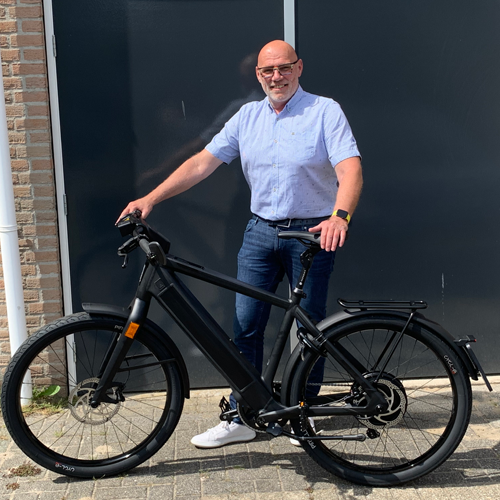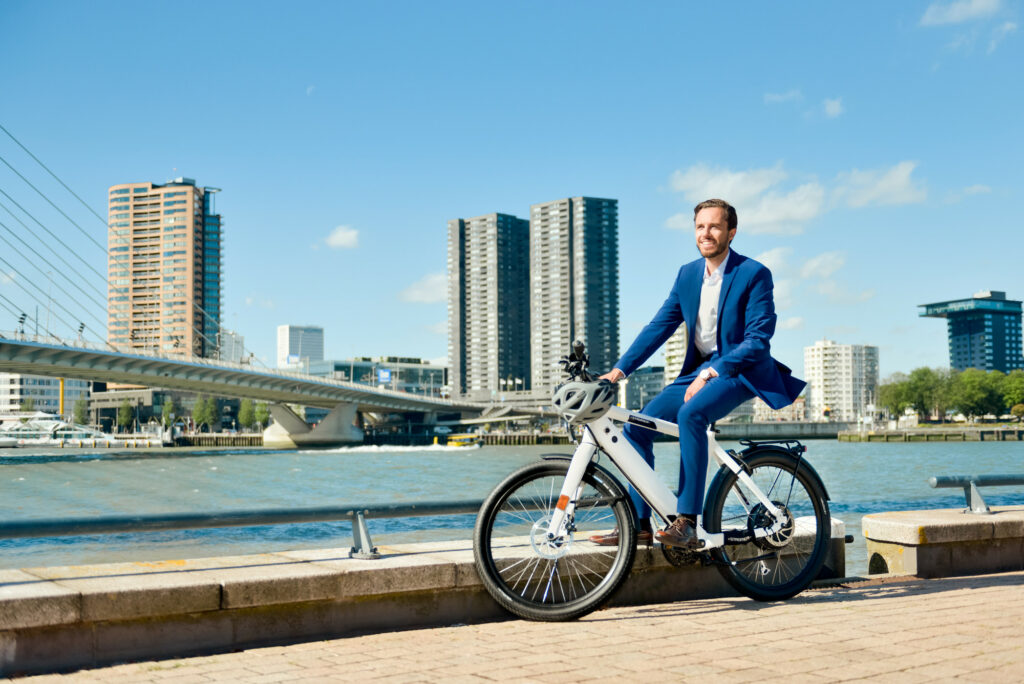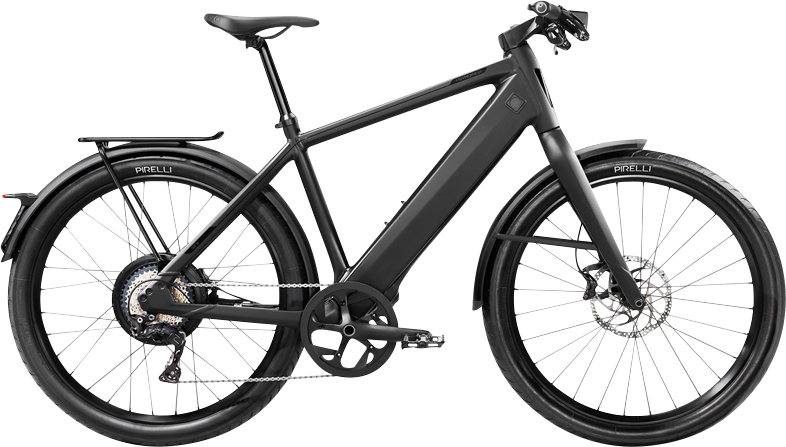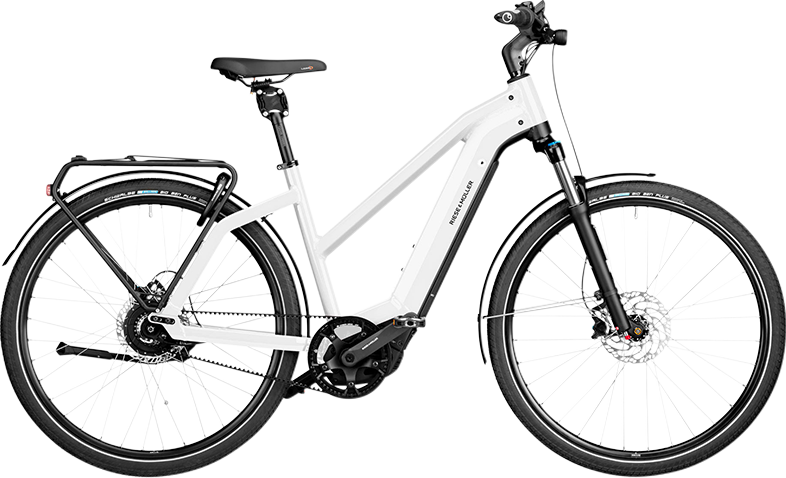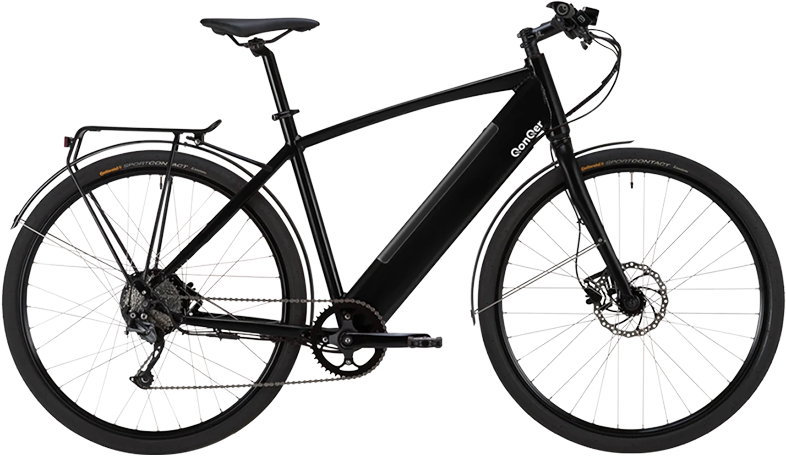Interview with Danielle Kruger, HR director at ALD Automotive
 Together with her colleagues in the HR department, it is Danielle’s job to keep employees moving in a healthy and sustainable manner. The e-bike thus plays an important role at ALD Automotive. Danielle talks about her own experiences with incorporating e-bikes into a mobility policy and what employers can do to promote e-bike use.
Together with her colleagues in the HR department, it is Danielle’s job to keep employees moving in a healthy and sustainable manner. The e-bike thus plays an important role at ALD Automotive. Danielle talks about her own experiences with incorporating e-bikes into a mobility policy and what employers can do to promote e-bike use.
Why do e-bikes fit so well with a sustainable and healthy mobility policy?
An e-bike is a wonderful addition to your mobility. You can cover much greater distances with an e-bike than with a regular bicycle. The fact is that if you have an e-bike outside your door, then you are more likely to leave your car at home. And cycling is healthy, of course. Though you do have pedal assistance with an e-bike, you still have to power it physically. This has a proven effect on your vitality. An e-bike fits in well with the healthy lifestyle that more and more people are adopting.
What other advantages does an e-bike offer?
Our research has shown that 15 per cent of employees are prepared to (partially) give up their parking space if they can make use of a company e-bike. Of course, that is a very smart way to save on mobility costs.
Other employees indicated that cutting down on their commute time is very important, so my advice is to clearly demonstrate to employees how much time they can save by cycling on an e-bike or speed pedelec.
Who is a company e-bike suitable for?
Some people may still have a certain image of the electric bike. But there are currently such beautiful and sporty models, you can really get away with that. A company e-bike is especially suitable for employees who prefer not to make a large purchase themselves or who have room in their business lease budget (besides the lease car). By leasing an e-bike, they also choose convenience; you have a good bike, insurance and maintenance are included in the package, so no hassle. The e-bike is suitable for employees who like to exercise, but don’t find the comfort of a regular bike sufficient and prefer not to arrive at work sweaty. And finally, we always get the feedback back that people enjoy being outdoors so much.
ALD Automotive recently conducted its own e-bike pilot scheme. Why is that, and what can you tell us about it?
It’s very simple: we also value sustainability and the health of our employees. Furthermore, we conducted a pilot programme so that we could see for ourselves what it is like to commute using an e-bike. We can claim that the e-bike is a good mode of transportation, but you also have to know what you’re talking about, so ‘practice what you preach’.
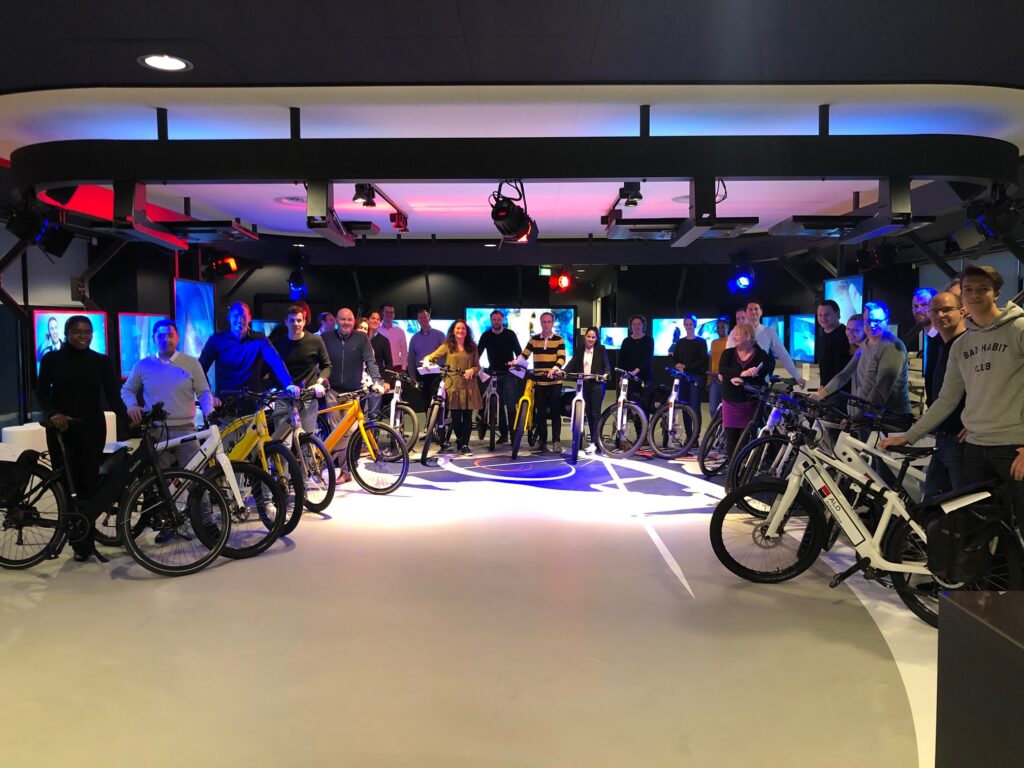
We reviewed employees’ postcodes to find out how far they live from work. This showed that, based on the distance, 40 per cent of them qualified for an e-bike. They were given an e-bike to use for three months, which the majority of them were very enthusiastic about, despite the fact that the weather was not always great during this period.
What did you learn from this pilot programme and what advice would you thus give to other employers?
Primarily that it is good to let employees become familiar with e-bikes. For the most part, the people who have tried out an e-bike don’t want to go back to using anything else. If the weather is bad then they will logically prefer to choose an alternative means of transport. You could assist employees with such situations by, for example, including rainwear in the offer. But, as far as I’m concerned, freedom of choice also comes into play here. The e-bike fits well into a range of mobility options: you can ride your bike and when the weather is bad you can drive your car or take public transport. That is ideal!
What factors are there to consider when making e-bikes available?
Depending on the distance that an employee has to travel, you can choose between the low-speed and the speed pedelec.
There are also a number of practical issues to consider. For example, is there a good place to store the e-bike and is it safe? Or is there a space at work where the employees can freshen up a bit?
Finally, do you think that employers should do more to promote e-bikes among employees?
Yes, absolutely. It is increasingly important to keep employees moving and vital. And both companies and employees can save costs when they use a leased bike. So we need to entice people to seek alternatives and that can be done by letting them try it. As management, you have a role model role. So get involved yourself, show that you think it’s important and share the stories with each other!
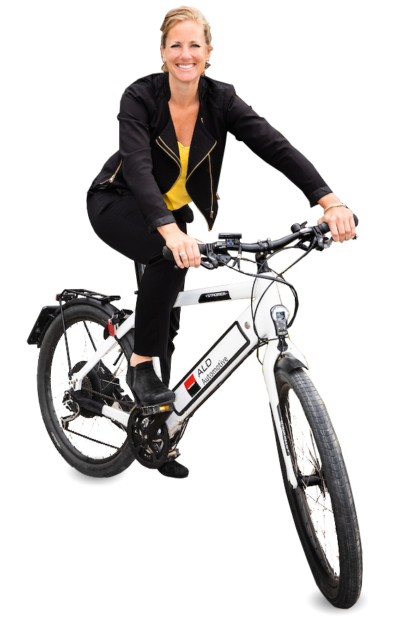

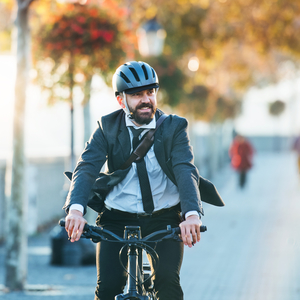
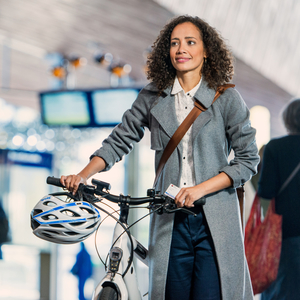
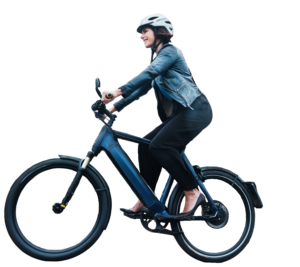







 Together with her colleagues in the HR department, it is Danielle’s job to keep employees moving in a healthy and sustainable manner. The e-bike thus plays an important role at ALD Automotive. Danielle talks about her own experiences with incorporating e-bikes into a mobility policy and what employers can do to promote e-bike use.
Together with her colleagues in the HR department, it is Danielle’s job to keep employees moving in a healthy and sustainable manner. The e-bike thus plays an important role at ALD Automotive. Danielle talks about her own experiences with incorporating e-bikes into a mobility policy and what employers can do to promote e-bike use.

